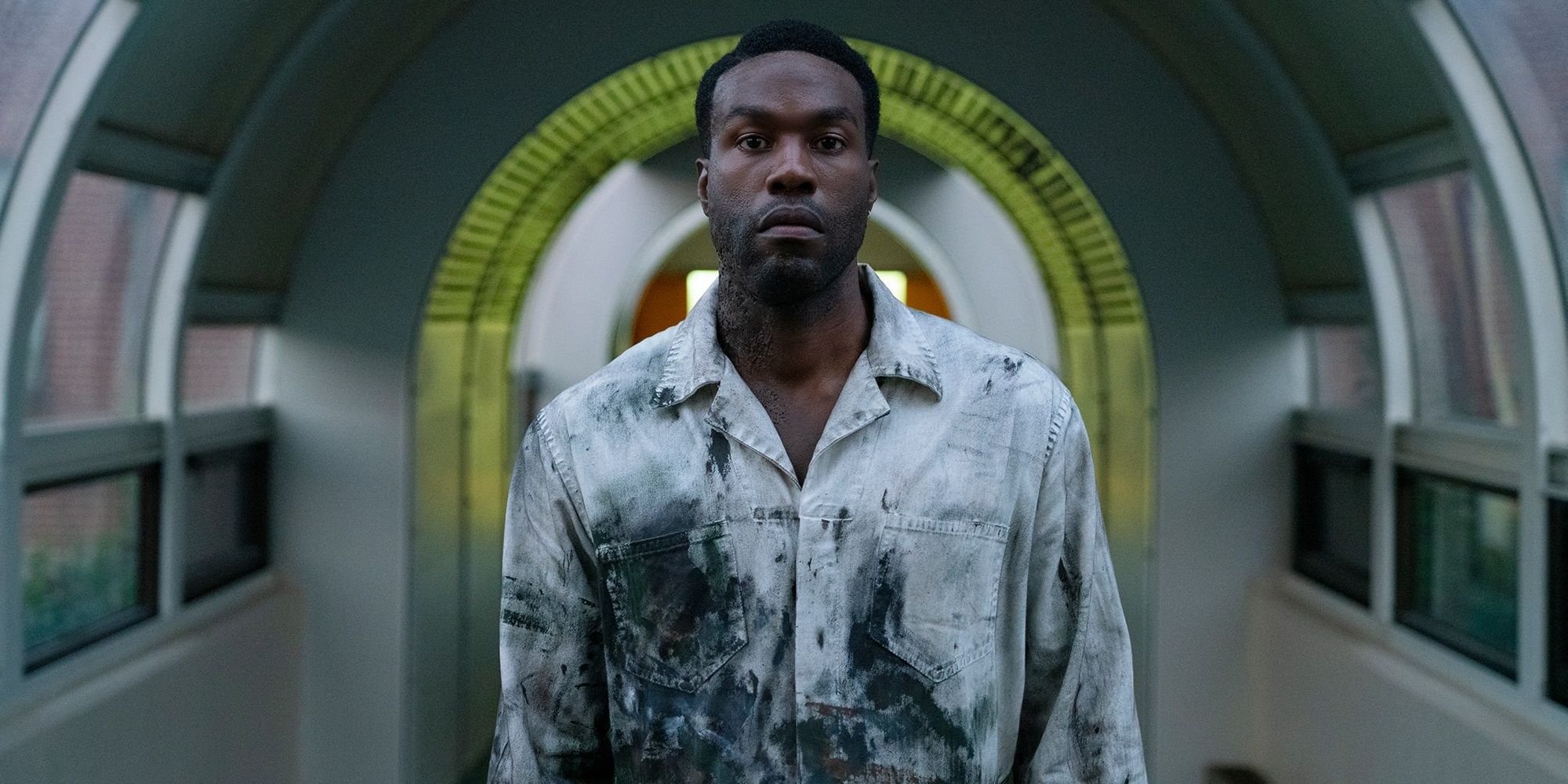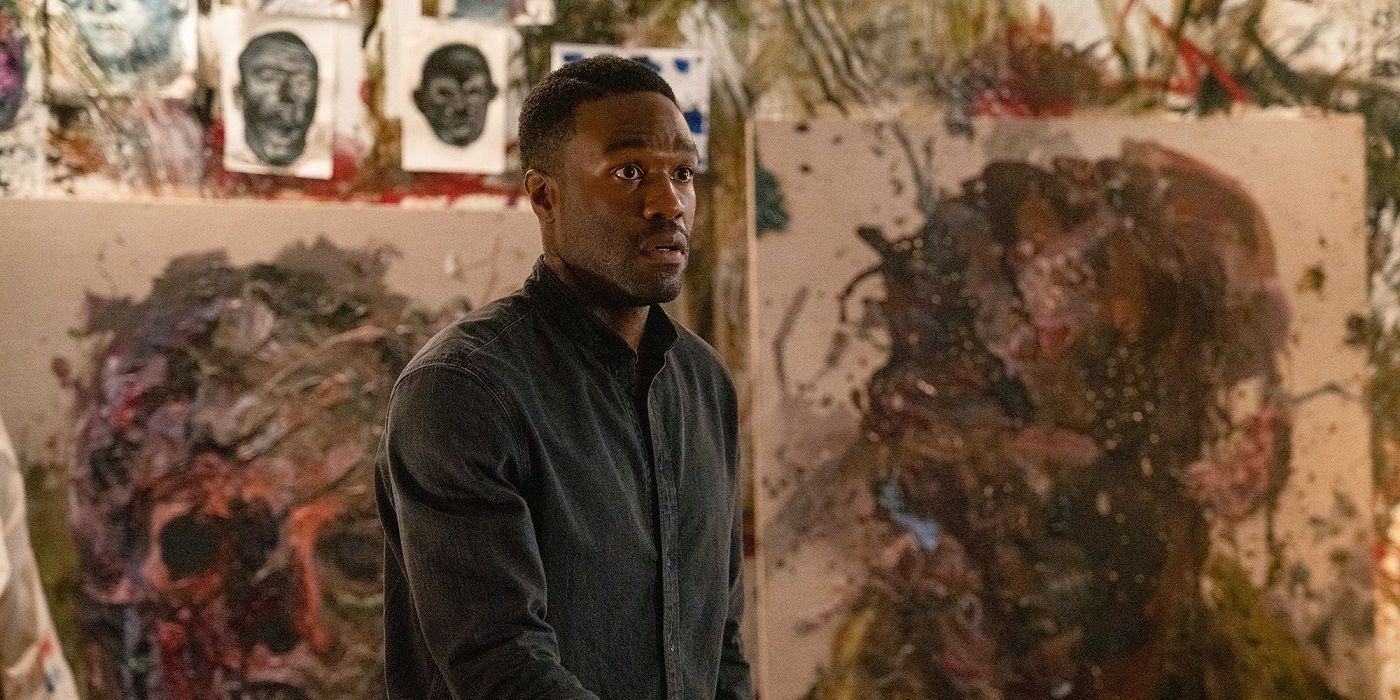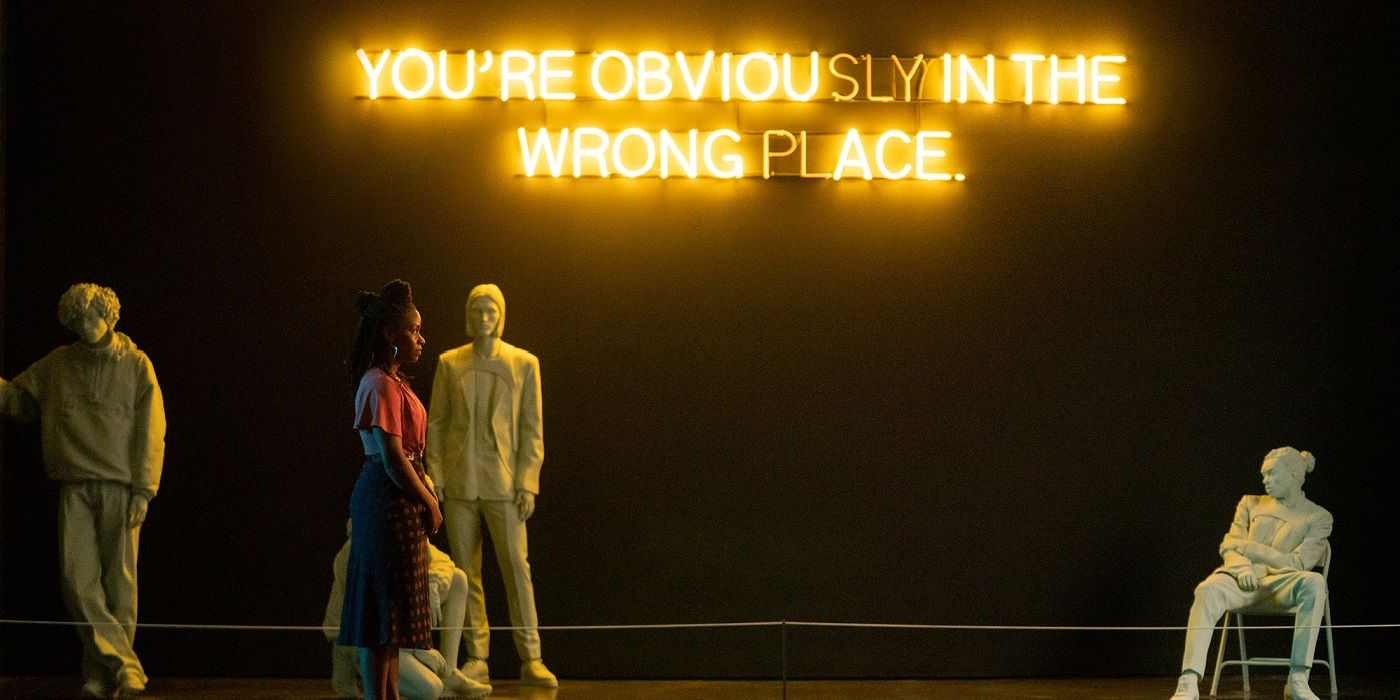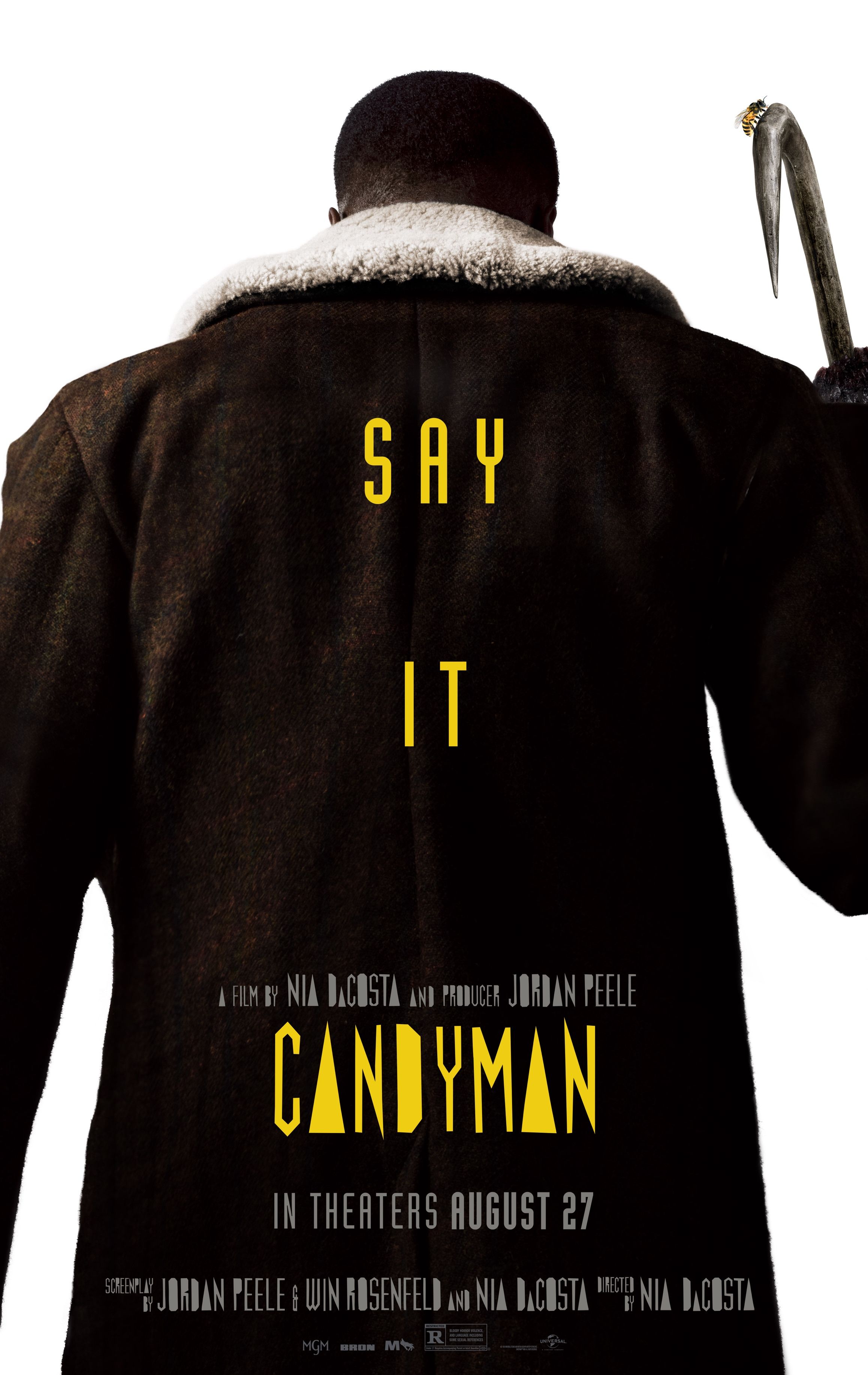The horror genre, when utilized to its full potential, can be used to explore a variety of themes. 1992’s Candyman did that with regards to Chicago’s class divide and racism. Rather than turning the 2021 film of the same name — delayed from a 2020 release due to the pandemic — into a remake, Nia DaCosta’s Candyman, which she directed and co-wrote alongside Jordan Peele and Win Rosenfeld, advances the story in a sequel that peels back the layers of the first film’s themes even further. From a visual perspective, Candyman is beautifully shot, with the use of mirrors and lighting atmospheric, masterfully aiding the storytelling while playing up the unease and horror. While introducing a few arcs it doesn’t fully explore, Candyman is replete with haunting imagery, disconcerting horror, and thought-provoking themes.
Candyman begins in Cabrini Green’s housing project in Chicago. It’s 1977 and the cops are looking for a man, Sherman Fields (Michael Hargrove), they believe has been putting razor blades inside candy. What happens to him affects the rest of the film and the mythology of the Candyman, a supernatural being who kills people when called upon five times while looking in the mirror. Fast forward to 2019 Chicago: art curator Brianna Cartwright (Teyonah Parris) and her artist boyfriend Anthony McCoy (Yahya Abdul-Mateen II) are living in an upscale high-rise apartment. They discuss gentrification while also feeling some guilt for living a luxurious life, surrounded by the remnants of Cabrini Green’s now abandoned housing. When he hears the story of Helen Lyle, the protagonist of the first film, Anthony goes in search of Cabrini Green’s past (much of which is framed by Colman Domingo’s William Burke), the racist history of the area, and the legend of the Candyman, who returns with a vengeance after being summoned.
DaCosta’s use of mirrors and other reflective surfaces is thrilling, with the director taking every opportunity to showcase reflections, sometimes as shadows, and the eeriness of Anthony’s past literally staring back, asking him to contend with it. Reflections are also used to examine the characters and work to elevate the blood and violence shed. Many of Candyman’s attacks happen just outside of one’s peripheral vision and, as the audience waits with bated breath for him to strike, the nail-biting anticipation of when (and sometimes if) it will happen heightens the tension and horror of every scene. Since the film itself is a sequel to the events that occurred in the first film, the big reveal nearer to the end doesn’t land with as much of a punch, but Abdul-Mateen II conveys the emotional shock of it all so well that it lingers regardless. The use of shadow art during the recounting of various stories throughout is also exceptional and adds to the unsettling tragedies. Here, the Candyman’s violence is an act of revenge, a mythologized entity who comes to life in defense of his community.
Candyman spotlights and questions art — who gets to make it, who benefits from it, and how the understanding of Black art by white critics, in particular, can be lost in translation because of the expectations by the latter of the former to deliver specific kinds of work they would perceive as “good” art. As an artist, Anthony leans into painful images, including a piece depicting hanging nooses, and is celebrated. When he does something unexpected and different, his work becomes a cliché in the eyes of art critic Finley Stephens (Rebecca Spence). That is, until the violent deaths start happening and her interest in his work (and its connections to the killings) are rejuvenated. To that end, the film comments on the many works of art that are upheld for weaponizing and exploiting Black trauma; it’s only then that many pop culture critics and awards organizations celebrate it, even when it doesn’t have anything to say. The idea that Anthony can’t be unboxed from the ways in which the upper echelons of the art world see his work is hindering, and the film thoughtfully dissects the layers of what that means. It’s one of the most intriguing aspects of the story, especially in how it relates back to Candyman, racial injustices and how it might factor into one’s work. Candyman also uses art to reflect the feelings of being an outsider, with the film’s visuals often being more effective and evocative than the dialogue itself.
Perhaps one of the primary issues with the film, however, is that it introduces several stories, but only delivers on some of them. To that end, Brianna’s story is less developed, with a flashback introducing the audience to her own childhood trauma, something that affects her and her line of work in the present. But Candyman doesn’t seem interested in delving further, offering only glimpses of her past without any additional exploration. It also happens too late in the story for it to have a full-fledged impact on the film’s events. The film grapples with several themes, some of which remain at the surface as it attempts to juggle more than can be handled in an hour and a half. It’s a continuation of the story first introduced in 1992’s Candyman and, while it certainly does stand on its own, the film sometimes falters in its bid to reflect on the past while simultaneously focusing on the present.
That said, viewers who enjoyed the original Candyman will find much to enjoy about DaCosta’s sequel. The film’s strengths lie in its extraordinary visual palette, with the director's use of art, reflections, and shadow elevating the story’s many themes, leaving the audience with much to think about and dissect afterward. Even though not all of its storylines get their due by the end, Candyman is haunting and visually striking, providing depth while advancing the story that began decades ago.
Candyman releases in theaters on August 27, 2021. The film is 91 minutes long and is rated R for bloody horror violence and language including some sexual references.




